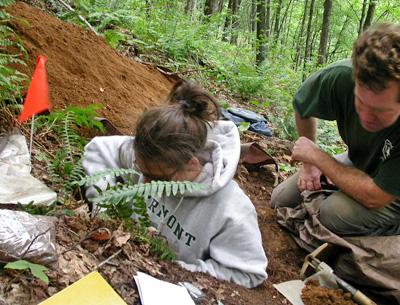Ca-Oxalate – A Missing Link in Understanding Response to Disturbance?

Calcium, an important forest soil nutrient, is being leached, or lost, from forest soils by the actions of acid rain and potentially tree harvesting. This has heightened scientists’ interest in understanding the mechanisms by which calcium is supplied to forests. Some plants and fungi form calcium oxalate, a relatively insoluble compound that could potentially serve as a reservoir for calcium in forest soils.
NSRC researchers worked on developing methods to assess calcium oxalate content of Northern Forest tree foliage and soil. They collected foliage and soil samples from Cone Pond and Hubbard Brook Research Watersheds in New Hampshire, Sleepers River Research Watershed in Vermont, and sugar maple monitoring plots in Pennsylvania, New York, Vermont, and New Hampshire. In the lab, researchers treated samples with hydrochloric acid and measured oxalate content on an ion chromatograph. Increasing amounts of pure calcium oxalate were then added to the samples to assess recovery.
The methods were successful for measuring calcium oxalate in foliage but not in soil. Researchers determined that sites with higher calcium supply grew foliage with higher oxalate concentrations. Calcium-demanding species, such as sugar maple and white ash, had a smaller proportion of the total calcium in their foliage as oxalate, while tree species suited to calcium-poor conditions, such as American beech and conifers, had most of their foliar calcium as oxalate. Decomposition of forest litter returns calcium oxalate to soils, but its significance relative to other calcium sources remains unknown, awaiting development of more quantitative methods of soil analysis.
